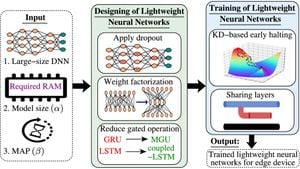Steelmakers are faced with the challenge of ensuring high-quality sinter mineral, pivotal for efficient blast furnace operations. A recent study presents innovative advancements in predicting the tumbler index (TI) for iron ore sintering using genetic algorithms and extreme learning machines.
The tumbler index is significant as it characterizes the strength and quality of sintered materials, which are foundational to the operation of blast furnaces. Without the right quality of sinter, productivity can falter, leading to increased costs and operational inefficiencies.
To achieve accurate predictions of TI, the researchers employed principal component analysis (PCA) to reduce data complexity, extracting key features from extensive datasets. Following this step, they trained the extreme learning machine (ELM) model, enhancing its performance by integrating genetic algorithms.
This approach does not only streamline the data processing involved but significantly boosts the predictive accuracy of the model. The GA-ELM technique achieved impressive prediction accuracy of 81.85% for absolute errors under 0.7%, demonstrating its reliability compared to traditional methods.
The study highlights the importance of having effective predictive models, especially as the steel industry aims for greater sustainability amid growing environmental concerns. With increasing focus on carbon neutrality, employing smart, data-driven approaches can lead to optimized operations and improved resource management.
The collaborative research reignites interest in advanced machine learning methods, which can substantially improve real-world applications within manufacturing processes. Contributors to this study encourage other sectors to adopt similar predictive frameworks to tackle their production challenges, emphasizing the potential benefits of combining genetic algorithms with neural networks.
To conclude, this innovative merging of genetic algorithms and extreme learning machines signifies not just progress within iron ore sintering but sets the stage for wider adoption of intelligent systems across the steel industry.



